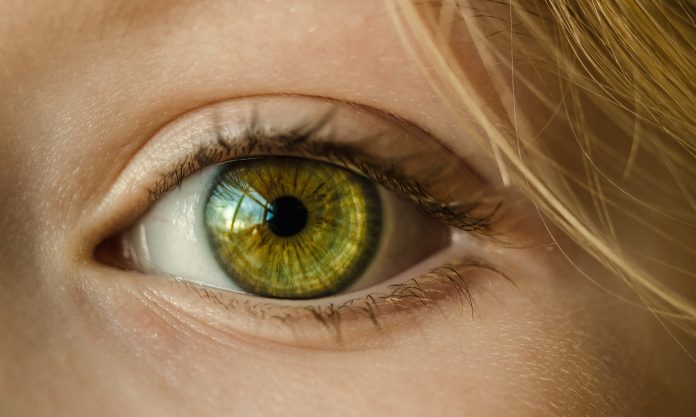The results of rodent studies led by scientists at NYU Grossman School of Medicine suggest that following brain injury, a type of glial cell that normally supports nerves may become neurotoxic and kill the nerve cells instead. The research results indicated that this “reactive” phenomenon may be a driving factor behind neurodegenerative diseases such as glaucoma, and possibly other chronic neurodegenerative diseases of the eye. The study is believed to be the first to show that reactive astrocytes kill cells over time in a process similar to that which occurs in glaucoma.
“Our findings point to astrocytes as the true culprits behind nerve cell death and highlight a new way of treating a neurodegenerative disease like glaucoma,” said Shane Liddelow, PhD, an assistant professor in the department of neuroscience and physiology at NYU Langone Health. “Perhaps targeting astrocytes after an injury may be the way to keep neurons healthy and help prevent further deterioration.” Liddelow is senior author of the team’s published paper in Cell Reports, which is titled, “Neurotoxic Reactive Astrocytes Drive Neuronal Death after Retinal Injury.”
Glaucoma is a neurodegenerative disease that is characterized by death of retinal ganglion cells (RGCs) and vision loss, the authors explained. The cause of RGC death isn’t yet known. “Although we have long known the identity of the cells that degenerate in the disease, we still do not understand how or why these cells die,” the researchers wrote.
Much of the research into the mechanisms of glaucoma is carried out in rodent models, in which increased intraocular pressure (IOP) leads to RGC death and axonopathy, “… pathology that closely mimics the progression and cell-type specificity of human glaucoma,” the authors continued. Liddelow, who is also an assistant professor in the department of ophthalmology at NYU Langone, noted that while half of all brain cells are astrocytes, research on glaucoma has historically focused on neurons.
For their reported study, Liddelow and colleagues examined more closely what happens when pressure builds up in the eye and damages the nerve cells that connect the eye and brain. Liddelow’s previous research in rodents had shown that astrocytes—the star-shaped glial cells of the central nervous system—could become reactive immediately after nerves are physically damaged. “We previously reported that microglia and astrocytes interact in response to acute injury to the optic nerve and in chronic neurodegenerative disease to produce a neurotoxic reactive astrocyte phenotype,” the investigators wrote.
Results from the newly reported studies now suggest that increased intraocular pressure drives astrocytes to release as-yet-unidentified neuron-killing toxins, possibly to clear away damaged cells. The studies also showed that nerve cell death linked to increased IOP was dependent on the presence of astrocytes. Increasing intraocular pressure had little effect on nerves when astrocytes were not present. And when astrocytes were prevented from reacting to increased pressure, neurons were damaged but not as badly.
For their experiments, the researchers increased IOP for two weeks in several dozen rats and mice, some of which had been genetically engineered to lack these neuron-killing reactive astrocytes. They found that while the unmodified mice lost up to half of the neurons in the injured area, those without toxic astrocytes saw little cell death. To examine whether neurons survived if astrocytes were prevented from releasing toxins, the researchers increased pressure again, this time disrupting inflammation in some of the animals to prevent their astrocytes from becoming reactive.
Interestingly, neurons that survived also continued to send electrical signals. The RGCs were “… altered but still largely functional, with generally appropriate dendritic stratification and electrical response properties,” the team noted. “… our observation that the electrophysiological and morphological features of RGCs spared from cell death were similar to those of the uninjured retina suggests that eliminating the factors that induce reactive astrocytes prevents many pathological changes that often occur before eventual cell death.”
The researchers concluded, “Altogether, these findings suggest that reactive astrocytes are a potentially powerful target for therapeutic intervention in both acute and chronic injuries to the eye and that preventing the death of RGCs may provide a useful platform for the regeneration of the retina.” Although the findings suggest that blocking astrocytes is a potential means of preventing nerve damage in glaucoma patients, Liddelow does caution that it is not yet known whether the resulting effects are permanent, or what side effects might occur.
Next, the research team plans to investigate if treatment might actually improve vision in animals with glaucoma. They also aim to study astrocyte behavior in related diseases like Alzheimer’s, Parkinson’s, and Lou Gehrig’s disease. The results may be relevant to the pathology of a number of neurodegenerative diseases, they pointed out. “The neurotoxicity of reactive astrocytes in glaucoma, combined with studies from other groups highlighting the contribution of this astrocytic response to models of Parkinson’s disease, Alzheimer’s disease, and Huntington’s disease, suggests that neurotoxic reactive astrocytes may be a common feature in the complex and heterogeneous milieu of the CNS’s response to prolonged injury.”
The reported research may also help to explain why brain cells continue to die long after excess intraocular pressure has been controlled. According to Liddelow, dying neurons spill inflammatory compounds into the surrounding tissue, which may further aggravate astrocytes and lead to a continuous cycle of cell destruction.
The study findings, Liddelow suggested, make clear that in order to understand neurodegenerative diseases, experts must look beyond neurons to the cells that surround them, including astrocytes, which are named after the Greek word for star.



